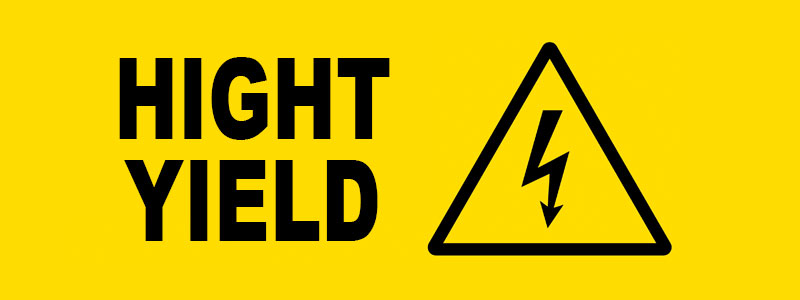
High yield bonds, also known as high-yield bonds, are an increasingly popular category of financial instruments among investors seeking higher yields than those offered by government or corporate bonds of high credit quality.
However, alongside the potential gains, these instruments also carry higher risks, making them suitable for knowledgeable and well-informed investors.
High-yield bonds represent an attractive opportunity for high returns, but they also carry significant risks that cannot be overlooked. Before investing in these instruments, it is essential to conduct a thorough analysis of the issuer, diversify appropriately, and assess one’s risk profile.
With an informed and well-informed approach, high-yield bonds can become a valuable component of a balanced investment portfolio. In this in-depth discussion we will explore what they are specifically, their main characteristics, advantages, risks, and some tips for evaluating them correctly.
1. What are Hight Yield bonds ?
High Yield bonds are debt securities issued by companies or entities that have a lower credit rating than investment grade.
The rating agenciessuch as Moody’s, Standard & Poor’s (S&P) and Fitch, classify these bonds as speculative, assigning them a rating generally lower than “BBB” (in the case of S&P and Fitch) or “Baa3” (in the case of Moody’s). This rating reflects a higher probability of default than investment grade bonds.
To compensate for the additional risk, High Yield bonds offer higher interest rates. This makes them particularly attractive to investors willing to tolerate greater risk in exchange for potentially higher returns.
2. Key features of High Yield bonds
As written earlier, these bonds are certainly very attractive because of their characteristics, and by understanding their advantages and risks well, it is possible to consider their inclusion within a balanced portfolio. But what are the main characteristics of this type of bond ? Why do we hear so much about them ?
In summary, the main features are:
High Yields: As the name suggests, High Yield bonds offer higher yields than government or investment grade bonds. This is the main incentive for investors.
Low credit rating: High Yield bond issuers often operate in cyclical sectors or have more fragile balance sheets, which justifies the lower rating.
Higher risk of default: The risk of default is higher than for higher-rated bonds. This means that investors may not receive interest or principal at maturity.
Volatility: High Yield bond prices tend to be more volatile and sensitive to economic conditions and changes in investor sentiment.
3. Advantages of high yield bonds
High yields: For income-seeking investors, High Yield bonds can be an attractive source of above-average bond market returns.
Diversification: These instruments can help diversify an investment portfolio, as their yields do not always follow the same trend as other asset classes, such as equities or government bonds.
Opportunities for capital gains: If the issuer’s financial condition improves, the value of its High Yield bonds could increase, providing opportunities for capital gains on invested capital as well.
4. Risks associated with high yield bonds
Default risk: the most obvious risk is that the issuer will be unable to meet interest payments or repay principal at maturity.
Price volatility: high-yield bonds are more sensitive to economic conditions and can experience large price fluctuations during periods of uncertainty.
Liquidity risk: In some cases, these bonds may be less liquid, making it difficult to sell them quickly without incurring significant losses.
Influence of interest rates: like all bonds, High Yield bonds are affected by interest rate movements. A rise in rates can reduce the value of bonds already outstanding.
5. How to evaluate high yield bonds ?
Before investing in High Yield bonds, it is essential to conduct a careful analysis. Here are some aspects to consider:
Credit rating: although these bonds have low credit ratings, it is important to choose issuers that have improving prospects or operate in stable sectors.
Financial health of the issuer: analyze the issuer’s financial statements to check its ability to generate profits and meet its financial obligations.
Market conditions: monitor general economic conditions and bond market sentiment, which can affect the performance of High Yield bonds.
Diversification: avoid concentrating too much capital on a single issuer or sector. A diversified approach can help reduce overall risk.
Investment duration: consider the duration of bonds in relation to your financial objectives. Bonds with shorter maturities may offer more protection against interest rate volatility.
6. Who should invest in high yield bonds?
High yield bonds are not suitable for all investors.
These instruments are generally indicated for:
- Investors with high risk tolerance, willing to face potential losses in exchange for higher returns.
- Those who have in-depth knowledge of the bond market and credit dynamics.
- Those seeking additional diversification in their portfolios by supplementing high-yielding instruments with other, safer assets.
We would always like to remind you that the contents of our articles are for educational purposes only and should in no way be considered investment advice or financial advice. We always encourage you to contact your trusted financial advisor for any needs in the area of advice.






